What is SEO? Where do I begin? Do I have time to do this? Is it really worth it?
If you are a small business owner, nonprofit, solopreneur, or freelancer, your time is of the essence. And keeping your business running means wearing a lot of “hats” to get things done. I know this is very true for me, and becoming skilled in all these roles can be a bit intimidating.
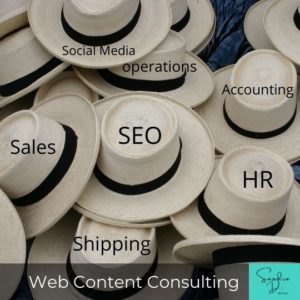
If you have heard of SEO, perhaps you have added it to your hat collection but are reluctant to try it or maybe you haven’t heard of this term at all. This is ok. Knowledge is power and in this week’s post, learn about SEO and why you should consider adding a few key basic SEO habits to your website maintenance routines.
Post disclaimer: I like analogies.
Do you want to skip past learning about SEO? TL;DR
5 good SEO habits to start now. Jump to the bottom for details.
- Resize your images to be web-friendly.
- Give your images good file names.
- Add alt text to your images.
- Use good internal hyperlinks or anchor tag text
- Use headings for better content structure.
What is SEO?
SEO or search engine optimization is the process to increase your business visibility online. It’s not magical or a necessity and it can be a worthwhile investment of time and potentially money, depending on your business goals.
How does the search engine work?
Google and Bing have automated programs or crawl bots that can read your website’s HTML to determine the structure, navigation, and content context. The search engine considers the information it collected and serves you the most relevant results.
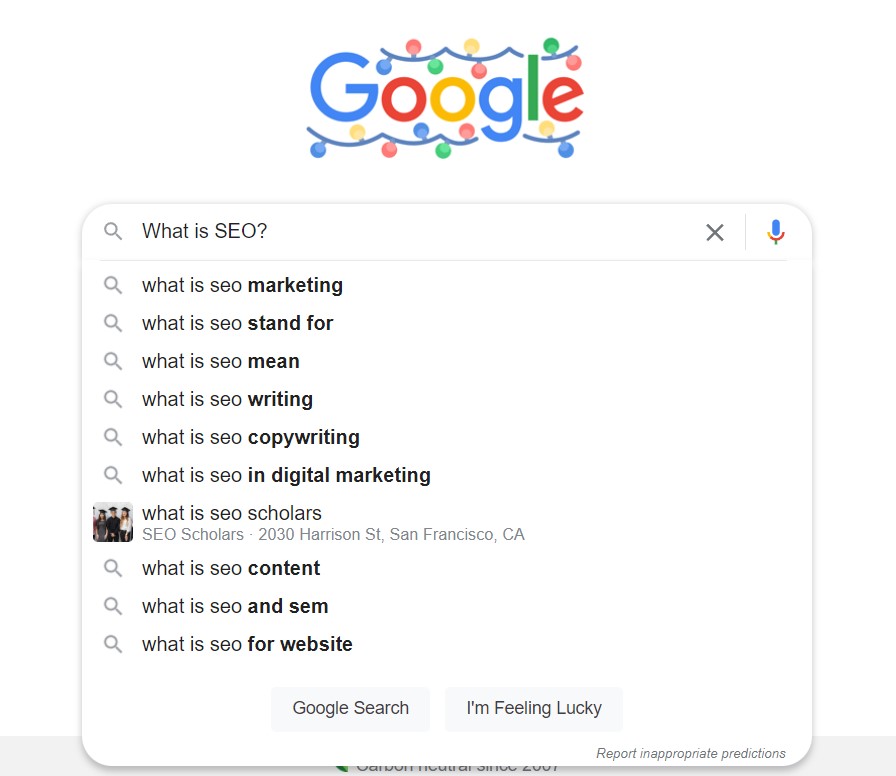
Applying SEO best practices aids the search engine’s crawl, index, and decision process of your web pages. Improving the chances of your pages bubbling to the top of the SERPs or search engine results pages.
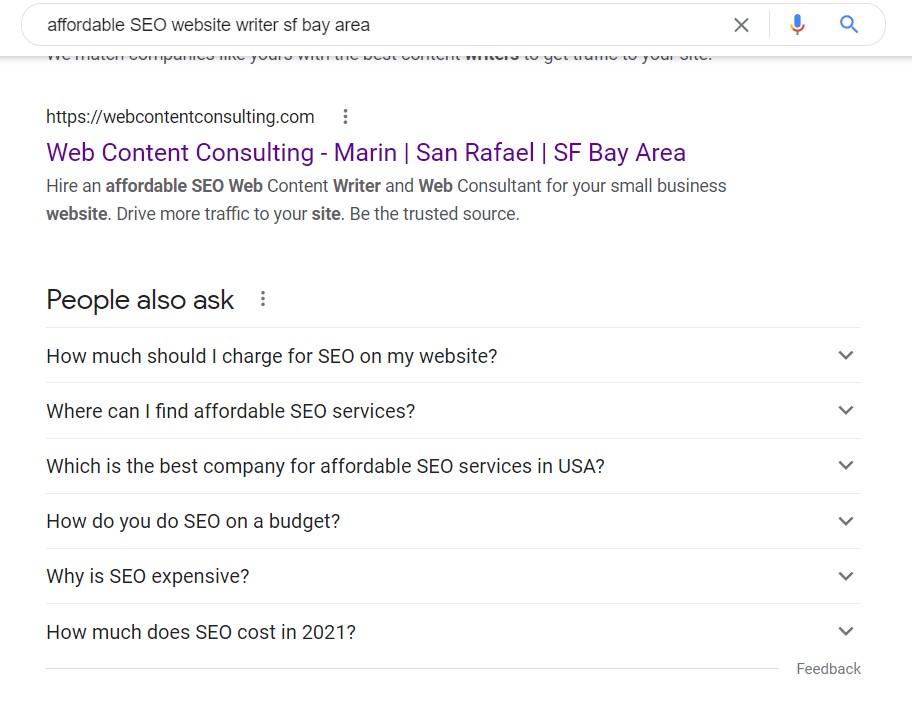
Here is a quick 3-minute video explaining a high-level view of how Google works.
Visit google’s developer page to get quick definitions of crawl, index, and page serving results.
Check out these two search engine webmaster guidelines for more details on optimizing your website for each of the search engines.
SEO’s relationship with user experience and accessibility.
There are additional bonuses to applying SEO best practices beyond search engine optimization.
Some of the SEO best practices overlap with techniques to make your site more accessible. Making your website accessible means designing your site to allow people with disabilities to access it, “perceive, understand, navigate, and interact” as noted by W3C.
People without disabilities also benefit from websites that have accessibility in mind.
These overlapping qualities contribute to usability goals and they all converge at a point where the focus is creating a website that provides the best user experience (UX) for everyone.
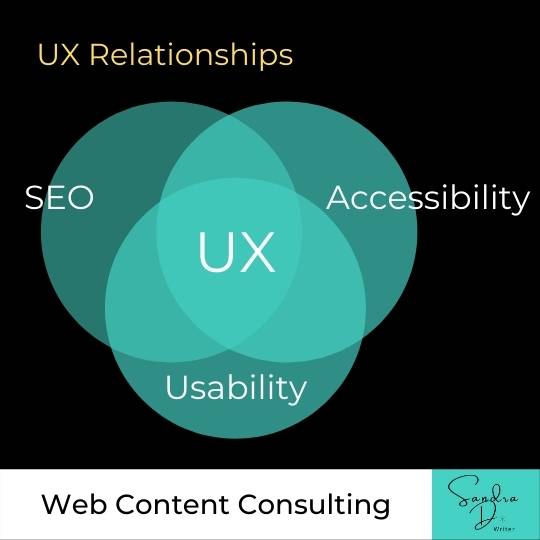
SEO Fairytales and Scare Tactics
- If you apply SEO, your web pages will rank number one on the search results.
- If you don’t use SEO, your business will fail.
Let’s set expectations now. Both those statements are FALSE. Don’t be misled by those who give this type of information. Below is a list of some benefits but there are no absolutes or guarantees and there is a lot of “it depends”. Once you know this, you’ll be set up for SEO success.
Applying SEO is good for improving your web page rankings.
But SEO doesn’t guarantee page one rankings. There are many factors to reaching page one, and some of those factors are within our control and many are not, like market saturation, locality, google algorithm updates. And for most businesses, a significant factor is simply time.
Depending on the intensity of your SEO efforts, the improvements in ranking will take time, and the search landscape changes often, requiring an iterative SEO maintenance process to keep up with dynamic factors.
Visitor traffic will increase.
The website visits metric only tells a part of the story. SEO can help your website be more visible, resulting in an increase in the number of people who visit your site.
What people fail to capture, is having more visitors doesn’t equate to more conversions like calls, emails, product purchases, or newsletter subscriptions. Be mindful and consider ways to get people to follow your CTA or calls to action with better content, copy, or other content marketing strategies.
Know the difference between increased website traffic, visitor retention, and bounce rates. You can define what a successful lead conversion is for your business and make metrics a part of your measures of success.
Over a period of time, what do these stats look like, and how do they correlate to the website metrics?
# of subscribers
# of sales
# of calls for consultation
# of emails opened
# of projects you started
Visitor traffic stats are not the only metric you should be looking at.
Your business will not fail if you don’t apply SEO
If you don’t optimize for search engines, you should prioritize optimizing your website to improve the user experience. Will your business fail without these optimizations? No, definitely not. But, you should consider the benefits of serving your customers with a better online experience and gaining more visibility online.
Use SEO as part of your business and content marketing strategy to achieve your business objectives. It is important that you see the value in it and don’t let anyone tell you that you have to do it.
Also, don’t put all your eggs in one basket. SEO is just a slice of the content marketing pie. Being found online, getting sales, and engaging with your customers does require utilizing more than one tactic.
Content Marketing Channels
- SEO
- Social Media
- Blog posts
- Newsletters
- Videos
- Podcasts
- Publications
- Paid Ads
SEO analogies
Still not convinced about the benefits of SEO? Here is another analogy:
I could walk a mile today. Without taking vitamins and practicing daily exercise it would be a slow walk to get to my destination.
Adding vitamins, a good diet, and training to my daily habits will increase my strength and decrease how long it takes to complete the mile. As an added bonus, I feel good at the end of the walk and want to continue exercising frequently.
This leads to a positive cycle of good health and exercise. I am motivated to compete in local races and improve my race time and finish rankings. I consider hiring a coach to help me refine my racing techniques.
Yes, this is quite an elaborate analogy. SEO is represented as the vitamins, healthy food, and exercise in this story showing an iterative cycle for success.
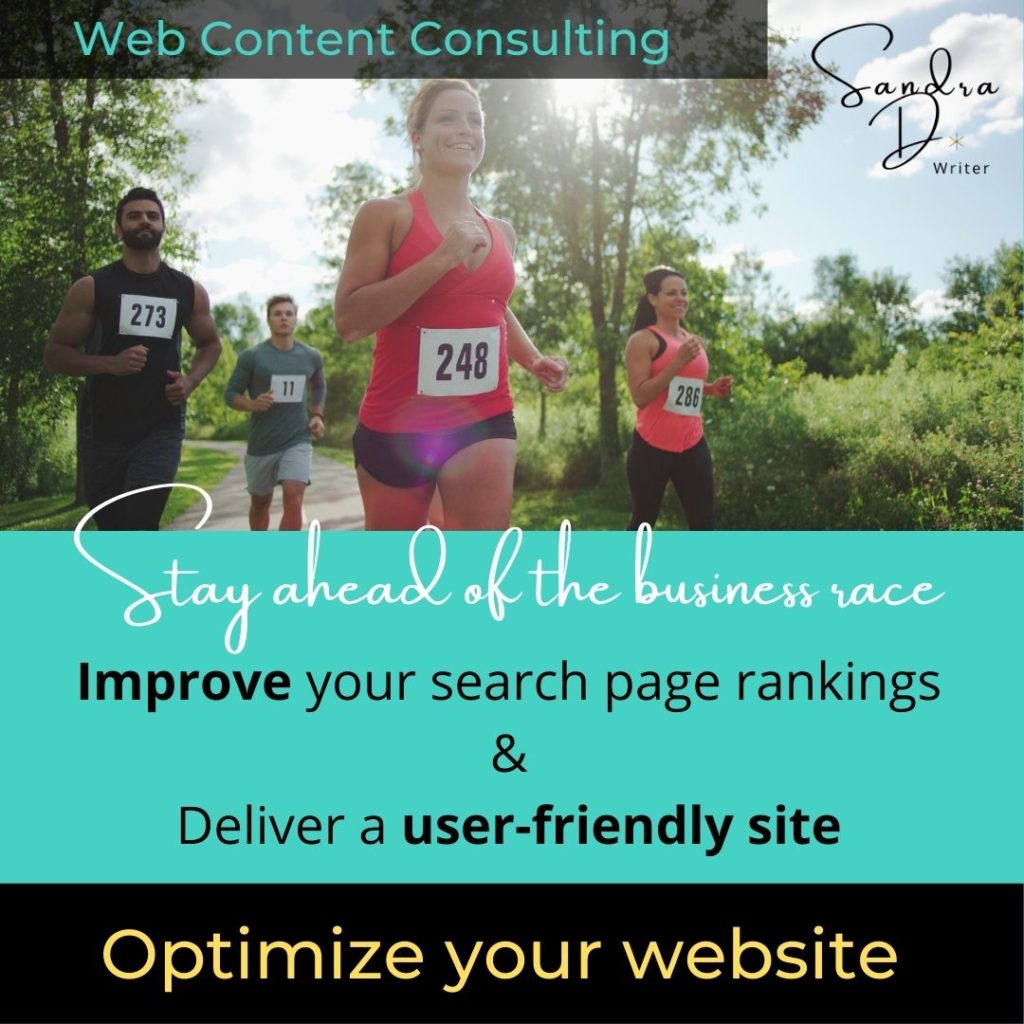
Bump your site visibility, get ahead of your competitors and provide your customers a better user experience applying basic SEO best practices to your website.
Start applying SEO habits now
Listed below are 5 great easy-to-implement SEO habits. Apply them now to get started on the right path to providing a better user experience for your customers and increase your visibility online.
1. Resize your images to be web-friendly.
Performance can be a make-or-break deal for a user and Google uses site performance as a ranking factor. When your site is slow to load people will most likely navigate away to visit another site that loads faster.
Become familiar with image resizing to provide the best user experience and optimize for SEO.
a) Read your CMS platform or website theme documentation for recommended image sizes and scales to provide the best visual presentation, and edit your images accordingly.
Here are general tips to start with for image size (pixels) and file sizes(kb)
- Full Width Header Images: 1024px X 768 px (Width x Height)
- Background Images: 1920px X 1080px (Width x any height)
- Other website images: 800px or less for width and height (portrait or landscape)
- LogosL 250-100px for width and height
After resizing, you can choose the quality percentage between 60-100% when you export your photo. If the image looks good with the lower percentage quality, save and use that version as this will reduce the file image size (kb) for speedier page loads on your website.
b) Know the difference between using a png, .jpg, and new image formats webp
Use .jpg for photos or consider .webp if your CMS allows this file type. Keep .png for logos only.
c) After editing your images, keep the file size of the image under 500kb for larger images (full landscape banner images) and under 100kb for medium to smaller images.
If you are not ready to invest in an image editor, here are a few FREE tools you can use to scale your images
Canva
Adobe Photoshop Express
Gnu Image Manipulation Program or GIMP (more advanced and similar to Photoshop or Lightroom)
To compress your images to make the file size smaller
Tiny JPG
Using WordPress, you can find plugins, like Smush, to help with file compression.
2. Give your images good file names.
Give images a proper file name that describes them. Replace spaces with hyphens in the title.
Let’s say I have a blog post about running and hiring a coach. I have an image of an athlete and myself, or if it is a stock photo of a runner and what looks to be a coach, I might rename the photo to be
ex. coach-dinardi-race-plans.jpg or runner-asking-coach-advice.jpg
The search engine crawlers now have text relevant to the content on the page and can be used as part of the search query results. Where applicable, add your business name or related service.
3. Add alt text to your images.
In most popular content management systems (CMS) platforms like Squarespace, Wix, and WordPress, you can add alternative text or alt text to describe the image. This benefits users with visual impairments or other temporary, situational, or permanent disabilities who use screen readers to help with reading. The text is included in the web crawls relating images to the content.
Provide a good image description for a user as your primary goal, and if there is a legitimate need to add your branding, you can do that for SEO.
Writing descriptive alt text does take some practice. It is a matter of finding the right balance of how much to describe that will be helpful for a user. Don’t forget to add alt text to your images on social media too. Most major social media platforms now provide the ability to add alt text.
Get more tips on writing alternative text from Alexa Heinrich, an advocate for digital accessibility. I follow her content and have learned and continue to learn how to be better with my alt text.
4. Use good internal hyperlinks or anchor tag text.
Internal hyperlinks should have text that gives context to the content. Users should know where they will be taken next. And when it is possible, avoid using the terms ‘Click Here’ or ‘Learn More’.
Hyperlinks provide search engines with a road map of your website too.
See the hyperlinks throughout this post for examples.
5. Use headings for better content structure.
Headings provide content structure for easier reading. This structure benefits people, screen readers, and search engines.
- Only use one H1 for your page heading. This heading should provide context to what the web page is about in a concise format.
- Divide your content into sections using H2 headings and sub-sections with H3 and beyond.
- It is important to choose the right words in your headings highlighting your page and sub-section content.
- Google may choose to use these headings in search results so it is important that your headings reflect the section content.
What are your next steps?
Help the search engine process and improve user experience by practicing good SEO habits. It’s never too late to get started.
Don’t be shy about continuing your own research on the benefits of SEO. Remember, SEO overlaps with usability and accessibility. Starting with SEO provides you with a good first step in practicing all three disciplines.
If you are still unsure about the benefits that have been discussed here, you can find additional resources to learn more about SEO. Join conversations online in forums, social media, or local networking groups to get your questions answered.
If you don’t continue down the optimization path, at the very least don’t forget to set up Google Analytics and Google Search Console for website metrics. These measures will give you a better understanding of what is and isn’t working with your website and the interactions or lack thereof with your customers.
I’d love to answer any questions you have about this topic, please schedule a free 30-minute consultation, and let’s talk about your business goals, and plan your next steps for optimization.